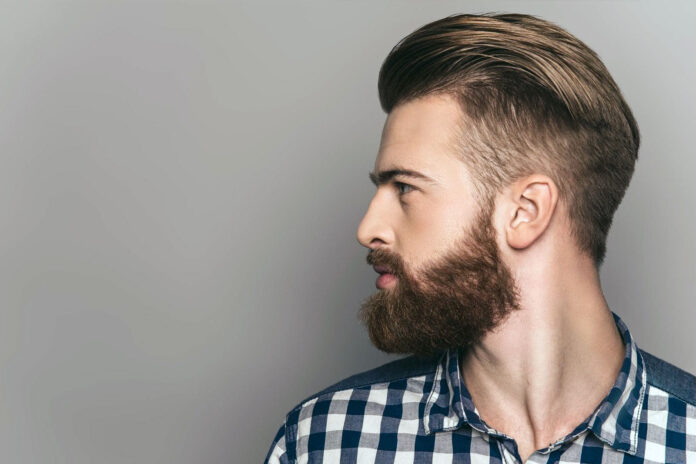Hair loss affects people of all ages, but for seniors, it can be particularly distressing. While traditional hair restoration methods may not always be ideal for older individuals, newer solutions are offering hope. One such innovative method is the Hybrid Hair Transplant, a technique that merges the strengths of FUE (Follicular Unit Extraction) and DHI (Direct Hair Implantation).
Hybrid Hair Transplant in Dubai is gaining attention for its minimally invasive nature and impressive results, even in individuals over the age of 60. But how safe is this procedure for senior citizens? This article delves into the safety profile of hybrid transplants for older adults, how the procedure works, and what seniors can expect in terms of recovery and results.
What Is a Hybrid Hair Transplant?
A hybrid hair transplant combines two advanced techniques—FUE and DHI. In this procedure, follicles are extracted using the FUE method, then implanted directly using DHI tools for more precise placement.
Comparison Table: Hybrid vs. Traditional Techniques
| Feature | FUE Only | DHI Only | Hybrid Hair Transplant |
|---|---|---|---|
| Extraction Method | Manual or Motorized | Manual | FUE |
| Implantation Technique | Slit-based Insertion | Direct Pen Implantation | DHI |
| Ideal Candidate | Moderate Hair Loss | Early to Moderate Hair Loss | Broad Range |
| Precision Level | Moderate | High | Very High |
| Recovery Time | Moderate | Short | Short to Moderate |
| Graft Survival Rate | High | Very High | Very High |
The hybrid approach allows for higher precision and natural-looking results, even in areas like the crown or temples where hair angles are more complex.
Why Seniors Consider Hair Transplants
Aging doesn’t just bring wrinkles and graying—it often leads to progressive hair thinning or baldness. For many seniors, restoring hair can offer more than aesthetic value; it boosts self-esteem and confidence. However, seniors often worry about the safety and effectiveness of cosmetic procedures at their age.
Key Benefits for Seniors:
- Restores youthful appearance
- Improves social confidence
- Safe and minimally invasive
- Doesn’t require general anesthesia
Is It Safe for Seniors?
Yes, in most cases, Hybrid Hair Transplant is safe for seniors, provided they meet basic health criteria. Unlike invasive surgeries, this procedure is done under local anesthesia, which minimizes systemic stress on the body.
Safety Factors to Consider:
| Safety Aspect | Description |
|---|---|
| Anesthesia Type | Local anesthesia only |
| Hospitalization | Not required; outpatient procedure |
| Bleeding Risk | Minimal, especially when pre-op evaluations are done properly |
| Infection Risk | Low with sterile technique and good aftercare |
| Scarring | Almost invisible scars due to precise extraction and implantation |
Health Evaluation Before the Procedure
Before performing a hybrid hair transplant on a senior, clinics conduct thorough evaluations to ensure the patient is fit for the procedure.
Common Pre-Surgical Tests for Seniors:
| Test Name | Purpose |
|---|---|
| ECG | Evaluates heart health |
| CBC (Complete Blood Count) | Detects anemia or infection risk |
| Blood Sugar (FBS, PPBS) | Assesses diabetes control |
| Blood Pressure Monitoring | Ensures stable cardiovascular status |
| Medical History Review | Identifies chronic conditions or medications |
If all results fall within acceptable ranges, most seniors can safely proceed with the treatment.
Hair Loss Patterns in Older Adults
Older individuals often experience a different hair loss pattern compared to younger patients. In seniors, the thinning is usually more diffuse, and the donor area might be less dense.
Hair Loss Type vs. Ideal Transplant Technique
| Hair Loss Pattern | Suggested Technique | Suitability for Hybrid Approach |
|---|---|---|
| Receding Hairline | DHI or Hybrid | Excellent |
| Crown Baldness | FUE or Hybrid | Excellent |
| Diffuse Thinning | Combination (Hybrid) | Very Good |
| Patchy Bald Spots | DHI | Good |
Hybrid hair transplant adapts well to these varying conditions, especially when a mixed strategy is needed for coverage and density.
Recovery in Senior Patients
One of the key concerns for older adults is the recovery process. Fortunately, hybrid hair transplant procedures are known for quick recovery, even in people above 60.
Recovery Timeline
| Timeframe | Expected Progress |
|---|---|
| 0–2 Days | Mild swelling and redness |
| 3–7 Days | Scabbing forms and starts shedding |
| 10–14 Days | Most crusts fall off, scalp looks cleaner |
| 1–3 Months | Hair shedding phase; new growth begins |
| 4–6 Months | Noticeable growth and density |
| 9–12 Months | Full results visible |
Seniors are advised to follow post-op care instructions meticulously, including avoiding direct sunlight, strenuous activities, and touching the treated area.
Advantages of Hybrid Hair Transplant for Seniors
Many seniors prefer hybrid techniques because they offer flexibility in both extraction and implantation. It allows for better control over direction, angle, and density of the transplanted hair.
Key Advantages
| Benefit | Description |
|---|---|
| Precision Placement | Natural-looking results with controlled implantation |
| Fewer Sessions Required | More coverage in a single session |
| Low Discomfort | Procedure done under local anesthesia |
| Minimal Downtime | Back to routine within days |
| Long-Term Results | Transplanted hair continues to grow naturally |
Common Concerns Addressed
Will Age Affect Results?
Age alone doesn’t determine the success of the transplant. Rather, the health of the donor hair and the patient’s overall medical condition are the key factors.
Is the Procedure Painful?
No, the procedure is typically pain-free due to local anesthesia. Post-operative discomfort is minimal and manageable with over-the-counter pain relief.
Will Existing Medical Conditions Interfere?
Conditions like controlled hypertension or diabetes are not automatic disqualifiers. However, uncontrolled chronic illnesses could pose risks and must be managed prior to the procedure.
Long-Term Expectations for Seniors
Hair transplanted via hybrid methods is usually permanent because the donor follicles are resistant to age-related hair loss. With proper care, seniors can enjoy long-lasting, natural-looking hair growth.
Longevity Table
| Age Group | Average Graft Survival Rate | Maintenance Required |
|---|---|---|
| 40–50 | 95% | Minimal |
| 51–65 | 90% | Low to Moderate |
| 65+ | 85–90% | Moderate |
Results may vary based on individual health, genetics, and post-op care.
Who Should Avoid It?
Not every senior is a candidate for a hybrid hair transplant. Certain medical conditions may increase the risk of complications.
Unsuitable Candidates:
| Condition | Reason |
|---|---|
| Uncontrolled diabetes | Impaired healing and higher infection risk |
| Blood thinning disorders | Increased bleeding |
| Advanced heart conditions | Higher anesthesia risk |
| Severe autoimmune diseases | Graft rejection risk |
A personalized consultation with a hair transplant specialist is essential before making a decision.
Final Thoughts
Hybrid Hair Transplant in Dubai has emerged as a revolutionary option for individuals dealing with advanced hair loss, including seniors. Thanks to its minimally invasive nature and combination of precise techniques, it offers a safe and effective solution for those looking to restore their hair in later years.































